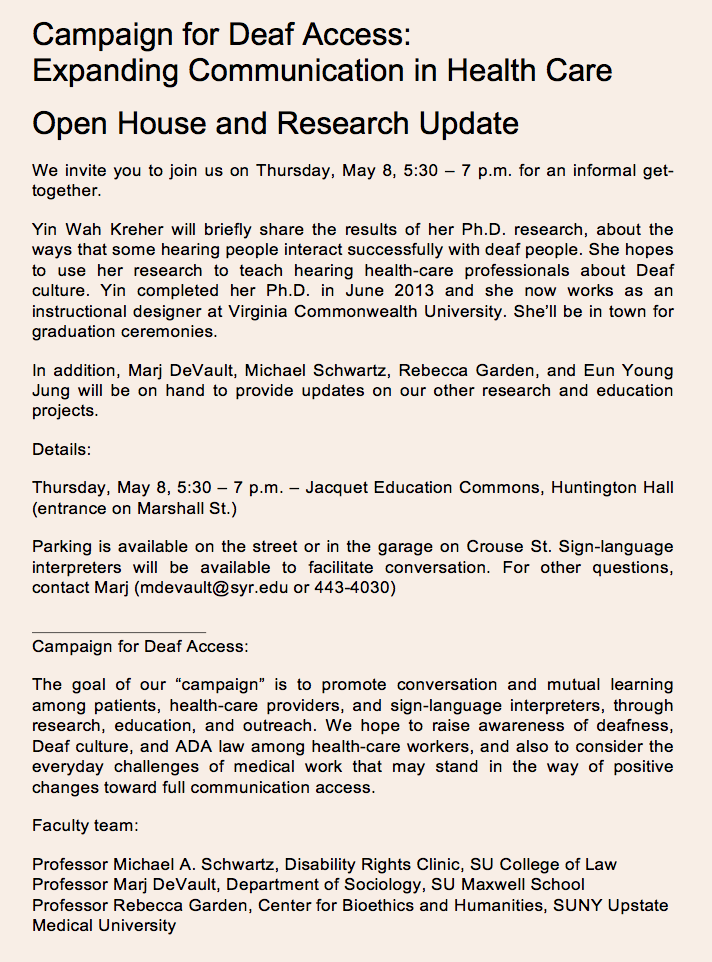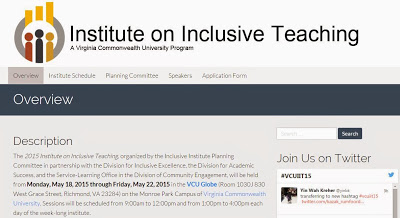Accessibility, Uniqueness and Accommodations 1

“We don’t see things as they are, we see things as we are.” – Anais Nin
First, I don’t have a disability and do not speak on behalf of disabled people because I do not know what it is like to not be able to see, hear or not have mobility of all my limbs. Second, I do claim to be unique; I acknowledge that everyone is uniquely different, although some people may be more alike in several ways. Therefore, we each learn and process things differently through our filters. We often think that some things don’t happen to us, but to “others.” We can’t imagine how another person does or thinks about an issue because we are locked into our own experiences or backgrounds. Until the day arrives, when we find ourselves encountering the “other” individual’s experience.
I’m working on a dissertation that crosses disciplines of instructional design, disability and culture. As such, I would say I have cultivated an extent of awareness of some differences, as a multicultural and hybrid person myself, about how differences may isolate us. I’m also aware that often people are not malicious; they have primarily not been exposed to issues of difference, lack the knowledge and/or experience of how to respond to people who are different from them or haven’t thought about them in depth. Interacting with different individuals or cultural groups involves more than just cultural sensitivity. It’s about making choices and having an open and flexible mindset. Sometimes, we make mistakes or commit a faux pas, but we must be willing to diverge and emerge from our parochial spaces and fields of specializations. Today’s post is about two main ideas which I will break into 2 posts:
1. Accessibility is not just for the “other” person.
Many people associate accessibility with disability, the term being understood mainly as a condition of some people who have “deficiencies,” by people who think not being able to hear or see is something to be fixed. Writing my dissertation and working on a project with my advisor helped me develop the awareness that blind or deaf people regard their non-seeing or non-hearing status as an identity they are proud of. However, our differences means we perceive reality differently. It takes time and patience to develop the awareness that facilitates appropriate interaction with people from these different groups.
Accessibility benefits not just the disabled, but non-disabled individuals as well. For example, having CART (Computer Assisted Real-Time Translation) services for my Deaf law professor at meetings helps me and other students to access content more readily and to have notes that we can refer to for revision at a later time. Also, I regularly see non-wheelchair bound people take elevators from the ground floor to the first floor.
Recently, I read an old (2010) article from The Chronicle about ADA compliance being a major area of vulnerability in online learning. (Yes, I am slow-er, sometimes!) The comments captured my attention, and inspired this blogpost. Bbaylis, a comment-er wrote poignantly about his own experience. Compliance does not occur because we have laws. We have laws to try to educate people who don’t understand that different people require different provisions for access to information and resources. (But some people break laws, right!) Bbaylis has been both an instructor and a provost, until a series of strokes rendered him “disabled.” He writes, not about losing his intelligence, but becoming unable to communicate quickly. (I’m sure being slower makes some people think he has “lost” it!) It takes him much longer now to write what he wants to express as he can no longer communicate verbally. He has come some ways from questioning the need for extra time for students with challenges. He is now a convert and understands what it is like to have to use a different communication mode. He writes,
“I now have empathy for the students with challenges. Most of them are not trying to get out of something. They are trying to maximize their potential. To do that they must have instructors who believe in them and are willing to help them.” To read more, check out bbaylis (November 12, 2010 at 11:03 am)
You May Also Like

Research Update
May 5, 2014
Hodge Podge of Thoughts on Inclusive Teaching Institute
May 30, 2014